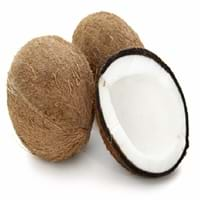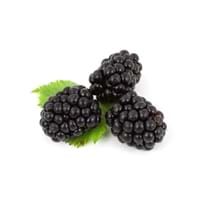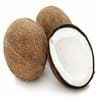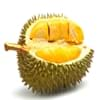Health Benefits
Acidity treatment, Acts as natural antibiotic, Anti-oxidant properties, Aphonia treatment
Cancer prevention, Heart care, Increases metabolic rate, Reduces stress, Treatment of dysentary, Treatment of skin Diseases
General Benefits
Anti-inflammatory properties, Body hydration, Boosts immune system, Controls blood sugar levels, Digestive aid, Fights against infections, Flu treatment, Healing of wounds, Helps in weight loss, Maintains healthy cholesterol level
Digestive aid, Maintains healthy cholesterol level, Strengthens bones
Skin Benefits
Anti-aging benefits, Heals sunburn, Hydrates skin, Reduces wrinkles, Skin rejuvenation, Skin revitalization, Treatment of skin diseases
Hydrates skin, Skin rejuvenation, Skin revitalization
Hair Benefits
Promotes longer and healthier hair, Regulates hair growth, Rejuvenates scalp, Shiny hair, Treatment of dandruff
Promotes longer and healthier hair
Allergy Symptoms
Abdominal pains, Breathing difficulty, Itching in tongue and other parts of mouth, Nasal congestion, Nausea, Runny nose, Vomiting
Facial muscle tension, Pressure in sinus, Respiratory congestion, Runny nose, Sneezing, Tingling sensation in wrist and face
Side Effects
Allergic reaction, Indigestion, Weight gain
Nausea, Vomiting, Might cause change of urine color
Best Time to Eat
Along with meal, Best if taken as a breakfast (or empty stomach), As a snack in the late afternoon, Morning time (before lunch)
Best if taken as a breakfast (or empty stomach), As a snack in the late afternoon, Don't consume at night and before bed, Eat the fresh ones, avoid mixing with any other foods, don't eat after meal., Morning time (before lunch)
Vitamin B5 (Pantothenic Acid)
Vitamin C (Ascorbic Acid)
Vitamin K (Phyllochinone)
Phytosterol
Not Available
Calories in Fresh Fruit with Peel
Not Available
Calories in Fresh Fruit without Peel
Not Available
Calories in Frozen Form
Not Available
Calories in Pie
Not Available
Type
Tree fruit, Tropical
Berry
Season
All seasons
Spring, Summer
Varieties
Tall Varieties- West Coast Tall, Laccadiv Micro, Andaman Ordinary, Fiji, Kappadam, San Ramon, Philippines, Spicate, and Pratap. Dwarf Varieties- Chowghat Orange Dwarf (COD) and Chowghat Green Dwarf (CGD)
Prime Ark, Prime Jim, Illini Hardy, Kiowa, Shawnee, Apache, Arapaho, Chester, Hull, Natchez, Navaho and Triple Crown and Von
Color
Brown, Green
Purplish black
Inside Color
White
Magenta
Taste
Juicy, Sweetish
Juicy, Sweet
Origin
America, India
Asia, Europe, North America, South America
Soil Type
Clay, Sand
Well-drained
Climatic Conditions
Hot, Humid
Dry, Warm to hot climate
Facts about
- Burning coconut's husk helps repel mosquitoes.
- Surveys say that falling coconut kills hundreds every year.
- Coconut water is used as a substitute Blood Plasma & is called "father of modern tissue culture science".
- There are around 2000 varieties of blackberries throughout the world.
- 80-85 degrees is the ideal temperature for its production.
- Leaves of blackberry tree are used to treat sore throats and mild inflammation of the gums.
Top Producer
Indonesia
United States of America
Other Countries
Brazil, India, Philippines, Sri Lanka
China, New Zealand, Serbia, South Africa
Top Importer
United States of America
United States of America
Top Exporter
Philippines
Mexico
Botanical Name
Cocos nucifera
Rubus Fruticosus
Synonym
Not Available
Rubus Millspaughii or Rubus Laciniatus
Subkingdom
Tracheobionta
Tracheobionta
Division
Magnoliophyta
Magnoliophyta
Class
Liliopsida
Magnoliopsida
Subclass
Arecidae
Rosidae
Family
Arecaceae
Rosaceae
Species
C. nucifera
Rubus fruticosus
Generic Group
Arecaceae
Rose
Difference Between Coconut and Blackberry
We might think that Coconut and Blackberry are similar with respect to nutritional value and health benefits. But the nutrient content of both fruits is different. Coconut and Blackberry Facts such as their taste, shape, color, and size are also distinct. The difference between Coconut and Blackberry is explained here.
The amount of calories in 100 gm of fresh Coconut and Blackberry with peel is Not Available and 43.00 kcal and the amount of calories without peel is 354.00 kcal and Not Available respectively. Thus, Coconut and Blackberry belong to and category.These fruits might or might not differ with respect to their scientific classification. The order of Coconut and Blackberry is Arecales and Rosales respectively. Coconut belongs to Arecaceae family and Blackberry belongs to Rosaceae family. Coconut belongs to Cocos genus of C. nucifera species and Blackberry belongs to Rubus genus of Rubus fruticosus species. Beings plants, both fruits belong to Plantae Kingdom.









